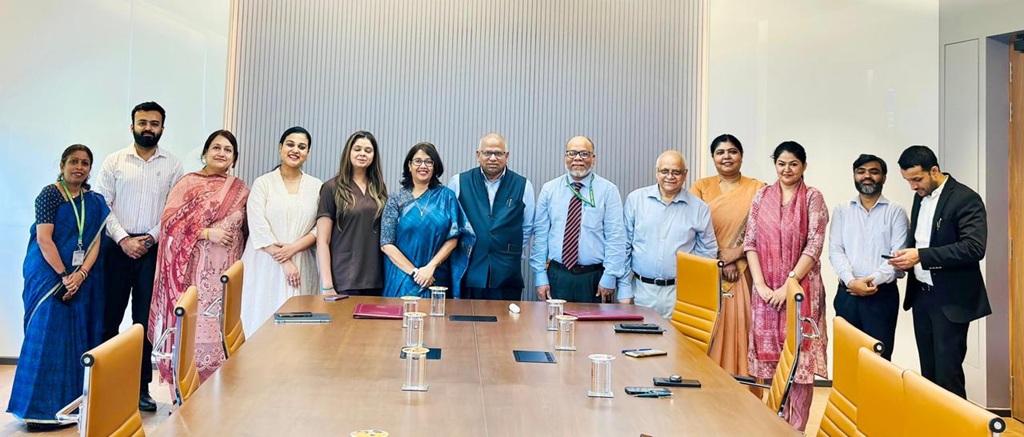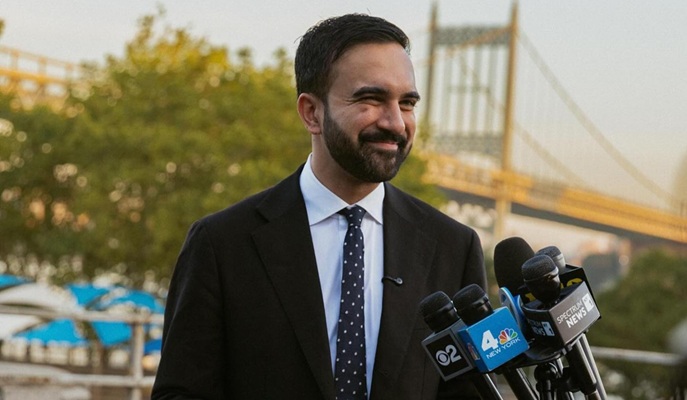
A worker busy on hoarding set to paying tribute to former APJ Abdul Kalam in Mumbai on Tuesday Photo by Imtiyaz Shaikh
By Abdul Rashid Agwan
Bharat Ratna Avul Pakir Jainulabdeen Abdul Kalam is no more. But, he is here to live forever.
He lately entered the most respectable list of Indian presidents, as the 11th of the genre, but he overshadowed all his predecessors and is likely to go in history as the most popular president of India. He became the President after a national consensus on his candidacy. He is the third President of India who was conferred the highest civilian award, Bharat Ratna, the other two were Dr S. Radhakrishnan and Dr Zakir Husain.
He turned a highly reserved ambiance of the President House into a gala place where people would like to go and interact with the highest authority of the nation without any vacillation. He opened Mughal Garden of his presidential palace for children, though for some specific weeks in a year. He was 80 plus but teenagers were most eager and frank with him to learn a lesson of life. He left the president house in 2007 but became even more popular and active among common people thereafter. His Facebook account registered 1881464 likes till his death.
Harper Collins informed about Dr Abdul Kalam’s most popular book among his total 5, Wings of Fire: An Autobiography of APJ Abdul Kalam, “We sold 1.25 lakh copies in English, around 60,000 in Tamil and another 40,000 copies of the Malayalam edition during the year 2002-2003 after he took over as the President.” The book’s translations have been published in 13 languages including Chinese and Urdu. Dr Kalam authored equally inspiring other books, namely Ignited Minds, Indomitable Spirit, India 2020 and Turning Points.
In a time wherein people, especially youth, have very few inspiring leaders, Dr APJ Abdul Kalam was an exception being the fountain of hope, ideas and dynamism. In 1999, he planned to have interaction with 100,000 youths saying, “I feel comfortable in the company of young people, particularly high school students. Henceforth, I intend to share with them experiences, helping them to ignite their imagination and preparing them to work for a developed India for which the road map is already available.”
In 2011, Dr Kalam launched a programme, ‘What Can I Give Movement’, for motivating youth to work against corruption. While launching the campaign he elucidated its significance saying, “The fight for corruption free society and good environment could be a reality only if people changed their attitude and started thinking what they could give to their nation.” How he was responded by the youth could be understood from one instance. In a Hindi film, I Am Kalam, he is portrayed as a positive influence on a poor boy of Rajasthan named Chhotu, who renames himself Kalam in the honor of his icon.
Boatman, newspaper hawker, scientist, rocket engineer, administrator, diplomat, statesman, motivator, educationist, visionary, teacher, writer, poet and musician are all the shades of one man, called Dr APJ Abdul Kalam. But, he dreamed to become a fighter pilot instead, which he couldn’t because he missed the selection by a thin margin. Indeed, the destiny has chosen him to be the ‘Missile Man of India’ and to play a most crucial role in India’s defense and space technologies, as an observer of the Pokhran-I and the executor of Pokhran-II nuclear tests and the designer of Agni and Prithivi missiles as well as many space launching vehicles such as SLV-III, IGMDP, Rohini and PSLV. The space technology which he started developing firstly alone and then with other scientists in early 1960s, now enables India to launch its Chandrayan and Mangalyan.
He was a complete man without a woman, as he did not marry. He was not father of any child but he was a father figure to thousands of children of the country whom he met, interacted and inspired during his tenure as the President and after.
Dr Abdul Kalam was also a great philanthropist. Once knowing that the Government of India would be responsible for all his expenses as the President and also thereafter till the last, he gave up all his life savings and salaries to a trust he founded, named PURA (Providing Urban Amenities to Rural Areas).
Dr Kalam has been known for his approach to communal harmony, which he learned during childhood when he used to see his Muslim father carrying Hindu pilgrims in a ferry. His candidacy for the highest public office in the country was backed by an unthought-of combination of the National Democratic Alliance (NDA), Nationalist Congress Party and Samajwadi Party. He was conferred Indira Gandhi Award for National Integration in 1997. He started his career as rocket engineer by working at a Church along with others. He remembered Hanuman Chalisa by heart and was a regular reader of the Quran for guidance.
A few minutes before he was persuaded to become the candidate of presidential elections in 2002, he had just finished a class at Annamalai University and when he left the President House five years later, he joined half a dozen universities to teach there at an age of 75, instead of living in ivory towers. He took his last breath when he was taking a course in Shillong. Dr Kalam was an excellent teacher, always full of knowledge and ideas, and the zeal to transfer them. The key reason for his accepting the presidential candidacy was its potential in pursuing his ideas postulated in “India 2020” if elected, and not the honor and clout associated with the President House. There is no doubt that academic life was his passion and love.
Dr Kalam remained active till his last and while taking a course on “Livable Planet Earth” at Indian Institute of Management, Shillong in 27 July evening, he left the livable planet forever!
In the golden jubilee celebration of European Parliament, he said,
“Where there is righteousness in the heart
There is beauty in the character.
When there is beauty in the character,
There is harmony in the home.
When there is harmony in the home,
There is order in the nation.
When there is order in the nation,
There is peace in the world.”
The man who taught the developed nations these lessons and prepared India to become a ‘developed nation’ by 2020, will always be evoked for his dynamism, inspiring thoughts, great contributions in the national life and humanity.
His journey began on the shores of Ramseswaram and ended amidst Shillong’s hills called “The Abode of Clouds”. He used to teach youth that “End is not the end, in fact END means Effort Never Dies.” But, at last he has to accept the fact, life ends and man dies.
The demise of Dr APJ Abdul Kalam is really a great loss for India and its people who loved him the most.
———
“You have to dream before your dreams come true.”
– Dr APJ Abdul Kalam
——–
[Contributor is a social activist, analyst and author of many books including his recent one, Islam in 21st Century: The Dynamics of Change and Future-making]





0 Comments